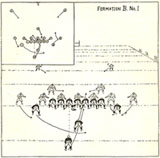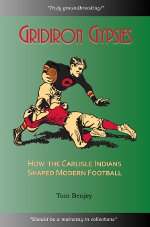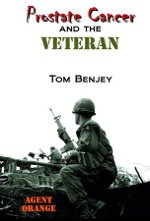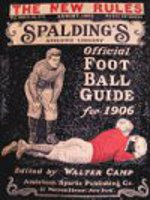An issue that reared its ugly head during the days Carlisle Indians roamed the gridiron has resurfaced again—still unresolved. The college sports environment then was much different than it is today but the problems facing today’s players are similar to those Carlisle players faced. Because Carlisle’s players were viewed as wards of the government, their food, housing, clothing, and education were paid for by the school. I almost said the government but Superintendant Pratt couldn’t have kept the school open on what the government allocated it. He solicited and received substantial donations from individuals, particularly from Quaker ladies in Philadelphia. Proceeds from the highly profitable football program helped keep the school operating.
Pop Warner was criticized roundly for sharing football profits with the players, largely in the form of chits for clothing at Blumenthal’s (today’s Wardecker’s Men’s Wear). The reason for this was that the government supplied the students with uniforms and work clothing for their daily use, but it didn’t provide them with civilian clothing to wear off campus. Players at the big, private college football powerhouses of the day largely came from affluent families and didn’t need to make money for playing for their alma maters. Today’s situation is different. Many, if not most, top athletes’ families do not have the money to pay the vastly increased costs of attending college, making them more like the Carlisle Indians in financial terms than their opponents of yore.
The recent National Labor Relations Review Board (NLRB) ruling that college athletes are employees of the private universities they represent is just the most recent attempt to deal with the issue. The distinction of private is key to this ruling because the statute on which it is based only affects private institutions, not the large public universities that tend to be the athletic powerhouses today. So, if this ruling stands—which is a big if considering the Supreme Court may reject the manner in which the NLRB board members were appointed and strike its rulings—it will only impact the small number of private colleges and universities that compete in top-level Division I sports. However, if it stands, it may have considerable impact on Title IX and minor sports at those schools. The saga continues…










